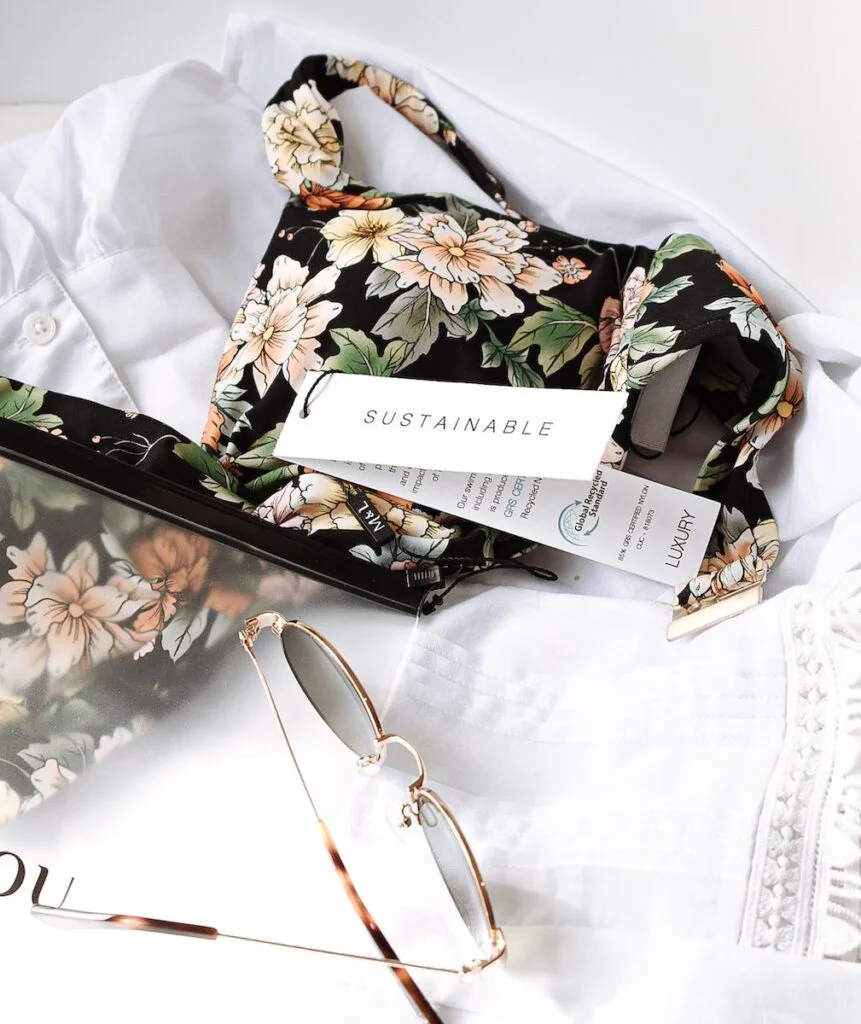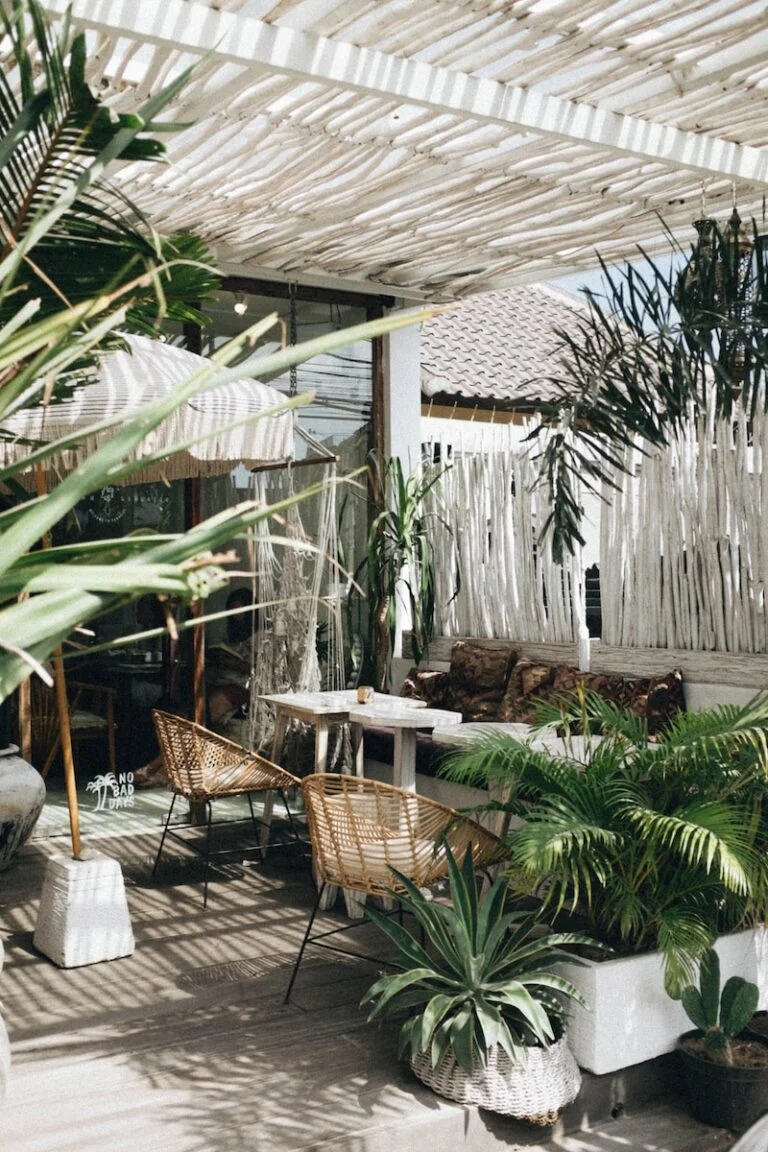
by newbeltane | Oct 2, 2023 | Design, Furniture, Living room, Skandi Living
 When it comes to interior design trends, the Scandinavian style has captured the hearts of many homeowners. With its clean lines, minimalistic approach, and emphasis on functionality, Scandi living rooms are both inviting and timeless. So, unlock Skandi Style in your living room today with these tips.
When it comes to interior design trends, the Scandinavian style has captured the hearts of many homeowners. With its clean lines, minimalistic approach, and emphasis on functionality, Scandi living rooms are both inviting and timeless. So, unlock Skandi Style in your living room today with these tips.
In this article, we’ll explore how you can transform your living room with the essence of Scandinavian design principles.
Whether you’re starting from scratch or looking to update your existing space, these design tips will help you achieve the perfect Scandi living room makeover.
Embrace Minimalism
The core of Scandinavian design is minimalism. It’s about decluttering your living space and leaving only the essentials. Start by assessing your current living room and identify items that you can live without.
Consider opting for multifunctional furniture that serves a dual purpose, such as a coffee table with storage or a sofa that converts into a bed. Remember, less is more when it comes to Scandinavian style.
Neutral Color Palette
Scandinavian living rooms are known for their neutral colour schemes. Think whites, soft greys, and pale blues. These colours create a sense of tranquillity and openness to unlock Skandi Style in your home.

Use these neutral hues for your walls, furniture, and even accessories. To add warmth, and incorporate natural wood tones in your flooring, furniture, and decor.
Natural Light and Airy Spaces
Scandinavian countries experience long, dark winters, which is why natural light is a key element in Scandi design.
Maximize the amount of natural light in your living room by using sheer curtains or blinds that allow sunlight to filter through. Keep windows uncluttered to create an airy and open atmosphere.
Functional Furniture
Scandinavian design is all about functionality. Invest in furniture that not only looks good but also serves a purpose.
Modular shelving units, sleek sideboards, and minimalist coffee tables are excellent choices. Look for furniture pieces with clean lines and a timeless appeal.
Cosy Textiles
 Despite the minimalistic approach, Scandinavian living rooms are known for their cosy and inviting atmosphere.
Despite the minimalistic approach, Scandinavian living rooms are known for their cosy and inviting atmosphere.
Achieve this by adding soft textiles such as throw blankets, cushions, and rugs. Opt for materials like wool and faux fur to create warmth and comfort.
Nature-Inspired Decor
Bringing nature indoors is a fundamental aspect of Scandinavian design. Decorate your living room with potted plants, botanical prints, and natural materials like jute and wicker.
These elements not only add visual interest but also connect your space with the outdoors and help truly unlock Skandi Style.

Functional Lighting
Proper lighting is crucial in Skandi living rooms. Invest in pendant lights, floor lamps, and table lamps that provide both ambient and task lighting. Consider fixtures with clean and simple designs that complement the overall aesthetic.
Personalise with Art and Accessories
While Scandinavian design leans towards minimalism, it’s essential to infuse your personality into your living room. Display artwork that speaks to you and add personal touches with accessories like vases, candles, and decorative trays. Just remember to keep the balance – less is more, even when it comes to decor.
Keep It Tidy
 One of the most appealing aspects of Scandinavian design is its clean and clutter-free look. Implement storage solutions to keep your living room organized. Closed cabinets and hidden storage options help maintain the minimalist feel.
One of the most appealing aspects of Scandinavian design is its clean and clutter-free look. Implement storage solutions to keep your living room organized. Closed cabinets and hidden storage options help maintain the minimalist feel.
Conclusion
Incorporating Scandinavian design principles into your living room can transform it into a space that is not only aesthetically pleasing but also functional and cosy.
Embrace minimalism, choose a neutral colour palette, invite natural light, invest in functional furniture, and add personal touches with decor and accessories.
By following these design tips, you can effectively unlock Skandi Style and create a Skandi living room that exudes style and comfort, making it the perfect place to relax and unwind. So, go ahead and embark on your Skandi living room makeover journey – your serene and inviting oasis awaits.

by newbeltane | Oct 2, 2023 | Cultural Concepts, Family, Outdoors, Play, Skandi Living, Traditions
 Scandinavian countries have a reputation for being among the happiest in the world and for raising happy kids. One reason for this is their approach to parenting, which places a strong emphasis on creating a balanced, nurturing, and inclusive environment for children.
Scandinavian countries have a reputation for being among the happiest in the world and for raising happy kids. One reason for this is their approach to parenting, which places a strong emphasis on creating a balanced, nurturing, and inclusive environment for children.
Skandi parenting prioritizes the overall well-being of the child, and this philosophy has been adopted by many parents around the globe.
In this article, we will explore the principles and values associated with Skandi parenting, highlighting how they contribute to raising happy kids who are confident and well-rounded children. We will discuss the importance of family traditions, the emphasis on play, the promotion of gender equality, and the supportive parenting style prevalent in Scandinavian countries.
We will also touch on the Scandinavian education and childcare system, the balance between independence and security, and the importance of mental health and community support. All of these factors are important in how Scandinavians go about raising happy kids.
Key Takeaways
- Skandi parenting prioritises the overall well-being of the child
- Family traditions play a significant role in strengthening family bonds and promoting a sense of belonging
- Emphasis on play and spending time in nature is crucial for a child’s physical, cognitive, and emotional development
- Promoting gender equality and nurturing a supportive environment are key to raising well-rounded children
- Scandinavian education and childcare system emphasises child-centred learning and high-quality early childhood education.
The Importance of Family Traditions in Raising Happy Kids
Family traditions are a cornerstone of Skandi parenting, providing a sense of stability and continuity in a child’s life. Whether it’s celebrating holidays, cooking together, or simply spending quality time as a family, these traditions have a profound impact on a child’s emotional well-being and development.

Research shows that children who grow up with strong family traditions are more likely to have higher self-esteem, better academic performance, and a stronger sense of identity and belonging. In Skandi parenting, family traditions are seen as a way to create a sense of community and shared purpose, strengthening the bonds between family members.
But family traditions are not just important for children. They also provide a sense of connection and meaning for parents, helping them to feel more grounded and centred in their busy lives.
By taking the time to establish and uphold family traditions, parents can create a sense of rhythm and routine in their family life, making it easier to navigate the challenges and stressors of modern parenthood.
So, when it comes to raising happy kids, one of the key principles of Skandi parenting is the value placed on togetherness and shared experiences.

Family traditions help to cultivate this sense of togetherness, providing a way for parents and children to connect and bond on a deeper level. By incorporating traditions into your family’s life, you can create a sense of continuity and connection that will stay with your children throughout their lives.
Children who grow up with strong family traditions are more likely to have higher self-esteem, better academic performance, and a stronger sense of identity and belonging. In Skandi parenting, family traditions are viewed as a way to create a sense of community and shared purpose, strengthening the bonds between family members.
Family traditions are not just important for children. They also provide a sense of connection and meaning for parents.
By taking the time to establish and uphold family traditions, parents can create a sense of rhythm and routine in their family life, making it easier to navigate the challenges and stressors of modern parenthood.
This includes establishing rhythms in the day-to-day, as well as creating special, yearly events that the family can look forward to.

Examples of family traditions:
| Tradition | Description |
|---|
| Family meals | Gathering around the table for regular meals, enjoying good food and conversation |
| Holidays | Celebrating holidays such as Christmas, Easter, and Midsummer together as a family |
| Outdoor activities | Regularly spending time outside, whether it’s hiking, biking, or skiing |
| Game night | Regularly playing games as a family |
| Storytelling | Sharing stories and memories as a family, passing down traditions and family history |
| Volunteering | Engaging in community service and volunteer work as a family |
Overall, family traditions play an integral role in Scandi parenting, contributing to the overall well-being and development of children. Incorporating traditions into your family’s life can provide a sense of connection and meaning that will stay with your children throughout their lives.
Emphasis on Play and Outdoor Activities
Scandinavian parenting places a strong emphasis on play and outdoor activities as essential components of a child’s development. Research has shown that children who engage in free, unstructured play have better physical, cognitive, and emotional development than those who do not.

In Skandi parenting, children are encouraged to spend time outdoors every day, regardless of the weather. This practice is rooted in the belief that nature has a positive influence on a child’s well-being and development. Outdoor play allows children to explore their surroundings, develop their senses, and learn about the world around them.
Skandi parenting also values unstructured play, where children can create their own games and activities without adult guidance. This type of play promotes creativity, imagination, and problem-solving skills.
Whether it’s building forts, playing in the mud, or climbing trees, Skandi parenting emphasizes the importance of allowing children to play freely and explore their surroundings.
In addition to physical activity, Skandi parenting places a high value on social play. Children are encouraged to play with others, develop social skills, and build meaningful relationships with their peers. Through play, children learn how to communicate, negotiate and resolve conflicts, which are important skills for their future success.
Overall, Skandi parenting recognizes the importance of play and outdoor activities for a child’s development. By promoting unstructured play, time in nature, and social play, Scandi parenting fosters well-rounded, confident, and resilient children who are ready to take on the world.
Gender Equality in Parenting
Scandinavian parenting places great emphasis on gender equality in childcare responsibilities. This means that both parents share the responsibility of taking care of the children and household tasks equally.
Gender-neutral values are promoted, encouraging children to pursue their interests and develop skills regardless of whether they align with gender stereotypes. Boys are encouraged to participate in activities traditionally associated with girls, such as cooking and caring for dolls, while girls are encouraged to explore traditionally male-dominated fields such as engineering and sports.
This approach promotes a more equitable society, with children and adults alike taking on equal roles and responsibilities. It also helps to break down gender stereotypes and promotes a more inclusive society.
Supportive Parenting Style
In Scandinavian parenting, creating a supportive and nurturing environment for children is a top priority. This involves a parenting style that focuses on empathy, trust, and open communication. Parents aim to understand their children’s feelings and perspectives and provide them with emotional support. They also encourage their children to express themselves freely and provide a safe space for them to do so.
This approach helps children develop a sense of security and confidence, which is essential for their emotional and cognitive development. Children who grow up in a supportive environment are more likely to have positive self-esteem and build healthy relationships in the future. Moreover, parents who adopt a supportive parenting style can establish a strong bond with their children, which is crucial for their overall well-being.
Scandinavian parents also recognise the importance of setting boundaries and discipline in child-rearing. However, they do so in a way that is respectful and considerate of their children’s needs and emotions. They avoid using physical punishment or shaming as a form of discipline and instead use positive reinforcement and logical consequences to teach their children appropriate behaviour.
Education and Childcare System
Scandinavian countries have a well-regarded education and childcare system, which is a core component of Scandi parenting. The system places a strong emphasis on child-centred learning, inclusive education, and high-quality early childhood education as pillars of child development.
Childcare in Scandinavian countries is considered a public service, with access available to all families regardless of their income level. The early childhood education and care (ECEC) curriculum focuses on socialization, play-based learning, and emotional development, with an emphasis on nurturing the whole child.
The education system is one of the most progressive in the world, with a focus on individualized learning and student autonomy. The curriculum is designed to encourage creativity, critical thinking, and problem-solving skills, which are essential for success in today’s rapidly changing world.
One of the unique features of Scandinavian education is the emphasis on cooperative learning and teamwork, which helps children develop important social skills and emotional intelligence. The system also places a strong emphasis on inclusive education, ensuring that all children have access to equal educational opportunities regardless of their background or abilities.
Inclusive Education
Scandinavian countries have a strong commitment to inclusive education, and their education systems are designed to meet the diverse needs of all learners. Teachers receive extensive training in supporting children with special needs, and schools offer a range of support services to ensure that all students can reach their full potential.
Children with special needs are integrated into mainstream schools as much as possible, with additional support provided as needed. This approach helps to reduce stigma and promote acceptance and understanding of different abilities and backgrounds.
The Scandinavian education and childcare system provides a nurturing environment for children to grow and develop, with a focus on individualized learning, socialization, and emotional well-being. This holistic approach is a cornerstone of Scandi parenting and contributes to raising well-rounded and content children.
Balancing Independence and Security
One of the key principles of Skandi parenting is striking a balance between independence and security. This approach emphasizes the importance of allowing children to explore and take risks while providing a safe and supportive environment.
This balance is achieved through a combination of factors, including the promotion of unstructured playtime and outdoor activities, as well as an emphasis on encouraging self-reliance and decision-making skills.
Studies have shown that children who are given the freedom to explore and take risks are more likely to develop cognitive and physical skills, as well as a sense of self-confidence. However, it is equally important to provide a secure environment where children feel safe and supported in their exploration.
In Scandinavian countries, parents and caregivers work to create environments where children can take risks and make their own decisions, while still feeling supported and guided. This approach helps children develop a sense of independence and autonomy, while also providing a foundation of security and support.
By balancing independence and security, Skandi parenting creates an environment that allows children to flourish and grow into well-rounded and capable individuals.
Emphasis on Well-being and Mental Health
Skandi parenting prioritizes the mental health and well-being of children. It acknowledges the importance of emotional intelligence, self-care, and resilience in building strong, healthy individuals. By promoting a supportive and nurturing environment, children are encouraged to express their emotions freely and develop coping mechanisms to deal with difficult situations.
 One of the ways Skandi parenting achieves this is by teaching children self-care from an early age. This includes activities like meditation, mindfulness, and relaxation techniques to help manage stress and anxiety. Children are also encouraged to spend time outdoors, connecting with nature to boost their mental and physical well-being.
One of the ways Skandi parenting achieves this is by teaching children self-care from an early age. This includes activities like meditation, mindfulness, and relaxation techniques to help manage stress and anxiety. Children are also encouraged to spend time outdoors, connecting with nature to boost their mental and physical well-being.
Another aspect of Skandi parenting is teaching children emotional intelligence. Children are taught to acknowledge and express their emotions freely, learning how to communicate their feelings effectively. This creates a safe and supportive environment for children, where they can feel heard and understood, building their sense of self and self-worth.
Resilience is another key attribute promoted by Skandi parenting. By teaching children to be adaptable and flexible, they learn to embrace challenges and find solutions to overcome them. This mindset helps children develop a growth mindset, which is essential for building strong, resilient individuals.
“Promoting self-care, emotional intelligence and resilience in children is at the core of Scandi parenting”
Overall, Skandi parenting focuses on building strong, healthy individuals by prioritizing their mental health and well-being. By creating a nurturing and supportive environment, children are encouraged to express their emotions freely, learn self-care techniques, and develop resilience to overcome challenges. These skills and values are critical for ensuring children grow up to be content, well-rounded individuals.
Slow Living and Minimalism
Scandinavian parenting emphasises the value of simplicity and minimalism. The concept of slow living is central to this philosophy, focusing on quality over quantity. This approach encourages parents to create a calm and nurturing environment for their children by simplifying life and reducing clutter.
Minimalism is a way of life that advocates for living with only the essentials. This approach to parenting helps children develop a sense of appreciation for what they have rather than a desire for more. By reducing the distractions that come with excess material possessions, children can focus on other aspects of life, such as spending time with family and friends.
 Minimalism also encourages parents to focus on quality time with their children. Rather than overwhelming them with too many activities, parents can choose to spend more time engaging in unstructured play and outdoor activities. This approach promotes creativity and fosters a sense of independence in children, allowing them to develop their imaginations and self-confidence.
Minimalism also encourages parents to focus on quality time with their children. Rather than overwhelming them with too many activities, parents can choose to spend more time engaging in unstructured play and outdoor activities. This approach promotes creativity and fosters a sense of independence in children, allowing them to develop their imaginations and self-confidence.
Overall, the slow living and minimalism philosophy in Scandinavian parenting encourages parents to create a calm and nurturing environment for their children. It helps children develop an appreciation for quality over quantity and encourages creativity and independence. By promoting a simplified way of life, parents can help their children focus on the things that matter most in life.
Building Strong Social Connections
Skandi parenting places a strong emphasis on building relationships and social connections as an essential part of a child’s development. Children are encouraged to interact with a diverse range of people, promoting inclusivity and empathy.
 The close-knit community in Scandinavia also plays a significant role in supporting families and children. From parental leave policies to communal childcare, society values the importance of providing high-quality care for children.
The close-knit community in Scandinavia also plays a significant role in supporting families and children. From parental leave policies to communal childcare, society values the importance of providing high-quality care for children.
Research suggests that strong social connections positively impact a child’s cognitive and social development. In Skandi parenting, children are encouraged to make friends and build relationships through unstructured play, group activities, and shared experiences.
Parents foster social skills in their children by modelling a positive attitude towards building strong relationships. They teach children to respect and value others’ opinions and to embrace differences, creating a healthy and inclusive social environment.
Overall, building strong social connections is a fundamental aspect of Skandi parenting that contributes to a child’s well-being and development. By encouraging the development of social skills and promoting diversity and inclusivity, children are equipped to thrive in their relationships and communities.
Conclusion
Skandi parenting, with its emphasis on family traditions and child-centred values, is proving to be an effective approach to raising well-rounded, content children. By prioritising play, outdoor activities, and gender equality, Scandinavian parents are helping their children develop important physical, cognitive, and emotional skills.
The supportive parenting style, focus on education and childcare, and emphasis on both independence and security contribute to the overall well-being of children.
In addition, Skandi parenting encourages the prioritisation of mental health and emotional intelligence, slow living and minimalism, and fostering strong social connections.
By creating a nurturing environment for their children, Scandinavian parents are helping their children grow into resilient, empathetic, and confident adults.
Overall, implementing Skandi parenting principles and family traditions can have a significantly positive impact on child development and family life. By taking a holistic approach and prioritizing the well-being of their children, Scandinavian parents are setting their children up for success in all areas of life.
FAQ
Q: What is Skandi parenting?
A: Skandi parenting refers to the parenting approach influenced by Scandinavian values and principles. It emphasizes creating a nurturing and supportive environment, promoting gender equality, emphasizing play and outdoor activities, and prioritizing well-being and mental health.
Q: How can family traditions benefit children?
A: Family traditions play a vital role in Skandi parenting. They help strengthen family bonds, create a sense of belonging, and contribute to overall well-being. Family traditions provide children with a sense of identity and a foundation of values to carry into their adult lives.
Q: Why are play and outdoor activities emphasized in Skandi parenting?
A: Play and outdoor activities are highly valued in Scandinavian parenting. Unstructured play and spending time in nature have been shown to contribute to a child’s physical, cognitive, and emotional development. It promotes creativity, problem-solving skills, and a connection with the natural world.
Q: How does gender equality play a role in Skandi parenting?
A: Gender equality is a crucial aspect of Scandi parenting. It involves equal distribution of childcare responsibilities, promoting gender-neutral values, and challenging gender stereotypes. By encouraging equality, children learn inclusivity, respect, and the importance of sharing responsibilities.
Q: What is the supportive parenting style in Skandi parenting?
A: The supportive parenting style prevalent in Scandinavian countries focuses on creating a nurturing and supportive environment for children. It emphasizes empathy, trust, and open communication. This approach helps children develop strong emotional intelligence, resilience, and a sense of security.
Q: How does the Scandinavian education and childcare system differ?
A: The Scandinavian education and childcare system places a strong emphasis on child-centred learning and inclusive education. It prioritizes high-quality early childhood education, providing children with a supportive environment for holistic development and fostering a lifelong love of learning.
Q: How does Skandi parenting balance independence and security?
A: Scandinavian parenting encourages children to explore and take risks while providing a secure and supportive environment. Balancing independence and security helps children develop confidence, resilience, and decision-making skills, while still having a safety net of support.
Q: Why are well-being and mental health prioritised in Skandi parenting?
A: Scandi parenting recognises the importance of well-being and mental health in children’s overall development. It promotes self-care, emotional intelligence, and resilience. By prioritizing mental health, children learn to manage their emotions, form healthy relationships, and navigate life’s challenges with confidence.
Q: How do slow living and minimalism influence Skandi parenting?
A: Slow living and minimalism are significant influences in Scandi parenting. By simplifying life and focusing on quality over quantity, these principles create a calm and nurturing environment for children. It encourages mindfulness, appreciating the present moment, and reducing the stressors of a fast-paced society.
Q: Why are strong social connections important in Skandi parenting?
A: Building strong social connections is an essential aspect of Scandi parenting. It emphasizes community support, fostering social skills, and promoting inclusive and diverse friendships. Strong social connections contribute to a child’s sense of belonging, empathy, and cultural understanding.

by newbeltane | Oct 2, 2023 | Cultural Concepts, Music, Traditions
Exploring Nordic Music.
 In this introduction to Nordic music, we explore the traditions and cultural roots of Nordic music and where it is today on the world stage, so to speak.
In this introduction to Nordic music, we explore the traditions and cultural roots of Nordic music and where it is today on the world stage, so to speak.
Key Takeaways:
- Skandi Music and Culture encompasses the musical traditions of Scandinavia
- The region’s rich cultural heritage greatly influences its music
- Skandi Music offers a mesmerising and unique sound
- Skandi Music has global recognition and influence
- Contemporary Skandi artists have adapted traditional sounds into modern genres
In the realm of Skandi Music and Culture, we embark on a captivating journey through the unique heritage and musical traditions of Scandinavia. Let’s delve into the diverse genres and styles that define this enchanting world.
A Rich Cultural Tapestry
Skandi Music and Culture
Skandi Music and Culture, deeply rooted in the enchanting Nordic landscapes, draw upon a rich tapestry of traditions. This captivating sonic journey is a homage to the centuries-old heritage that continues to evolve and inspire.
Traditional Tunes
From hauntingly beautiful fiddle tunes in Sweden to the mesmerizing vocal harmonies of Norway’s folk music, the Nordic region has a musical heritage as diverse as its breathtaking landscapes.
Influential Musicians
Legendary artists like Edvard Grieg and Jean Sibelius have left an indelible mark on the world of classical music with their timeless compositions. Their melodies evoke the spirit of the North.
Nature’s Influence: From Landscapes to Music
Skandi music’s connection to nature is profound, mirroring the region’s rugged landscapes and wild forests. Traditional Nordic music often features instruments like the Hardanger fiddle, evoking the Nordic wilderness.

Myths and Legends: Inspiring Melodies
Tales of trolls, elves, and mythical creatures inspire Skandi songs, capturing the mystical qualities of the Nordic imagination. Ancient folk dances and customs have been passed down through generations, adding depth to the Skandi music scene.
Skandi Music Today
Skandi music continues to evolve, blending traditional and contemporary sounds. Emerging artists, like Danish pop singer MØ and Norwegian indie-pop band Highasakite, are making waves. Norwegian producer Kygo’s fusion of traditional elements with electronic dance music has gained global recognition.
Contemporary Innovators
 Today, contemporary artists like Kygo have taken the Nordic music scene by storm. Kygo’s fusion of electronic beats with traditional Nordic elements has resonated with audiences worldwide.
Today, contemporary artists like Kygo have taken the Nordic music scene by storm. Kygo’s fusion of electronic beats with traditional Nordic elements has resonated with audiences worldwide.
Electrifying Trends
The infusion of electronic music into traditional Nordic sounds has sparked a new wave of creativity. It’s not just about the music; it’s about the atmosphere, the visual storytelling, and the emotional journey it creates.
Global Recognition
Skandi Music and Culture have transcended borders, garnering global recognition for their unique blend of tradition and innovation. It’s a genre that tugs at heartstrings and makes feet tap in unison.
An Unforgettable Auditory Odyssey
So, immerse yourself in the world of Skandi Music and Culture, where ancient melodies and contemporary beats converge to create an unforgettable auditory masterpiece. Experience the magic of the North through its enchanting sounds.
Influencing Global Trends
Skandi music’s unique blend of traditional and contemporary sounds, innovative use of electronic music, and minimalist aesthetic have captivated audiences worldwide. It has influenced artists globally and extended its impact on the fashion industry.
Established in 1999, the Øya Festival in Oslo, Norway, stands as a vibrant celebration of Skandi culture. It features a diverse lineup of national and international artists, spanning genres from rock and indie to electronic and hip-hop. Beyond music, the festival offers a rich selection of food, art installations, and cultural activities, making it a genuine celebration of Skandi culture.
Iceland Airwaves: An Icelandic Musical Showcase
 Held in Reykjavik, Iceland, the Iceland Airwaves Festival is another renowned Skandi festival. With over 200 acts performed across various venues in the city, this festival serves as a hub of musical discovery and exploration.
Held in Reykjavik, Iceland, the Iceland Airwaves Festival is another renowned Skandi festival. With over 200 acts performed across various venues in the city, this festival serves as a hub of musical discovery and exploration.
Conclusion
Skandi Music and Culture offer a mesmerising glimpse into the rich heritage and musical traditions of Scandinavia. From ancient folklore to contemporary sounds, the allure of Skandi music and culture continues to captivate audiences worldwide.

by newbeltane | Oct 2, 2023 | Lifestyle, Sustainability, Sustainable Living

Welcome to the world of living green the Skandi Way, where eco-living in Skandi is a way of life. The Skandi region boasts a rich culture of sustainable practices that have been passed down from generation to generation. The concept of Skandi sustainability is all about making conscious choices that benefit both you and the environment. From sustainable transportation options to eco-friendly home and personal care products, living sustainably in Skandi is accessible to everyone.
Discover how you can integrate Skandi sustainability into your daily life and become part of a global movement towards a more sustainable future. Let’s explore the eco-living practices and sustainable choices that define the Skandi way of living.
Key Takeaways
- Skandi Sustainability in Daily Life is all about making conscious choices that benefit both you and the environment.
- Sustainable practices in Skandi are passed down from generation to generation.
- Living green the Skandi Way is accessible to everyone.
- The Skandi region boasts a rich culture of sustainable practices.
- Skandi sustainability is part of a global movement towards a more sustainable future.
Embracing Skandi Sustainability
Living sustainably is not only good for the environment but also for your personal well-being. Embracing Skandi sustainability means making environmentally conscious habits a part of your everyday living. It’s about making small changes that have a big impact in the long run.
One of the easiest ways to incorporate living green the Skandi Way in everyday living is by reducing your carbon footprint. You can do this by reducing your use of plastic, conserving energy, and reducing waste. For instance, switch off lights when you’re not in a room, take shorter showers to save water, and carry a reusable water bottle instead of buying plastic ones.
 Another great way to embrace Skandi sustainability is by adopting a plant-based or flexitarian diet. This reduces your carbon footprint and benefits your health. By consuming fewer animal products, you can reduce greenhouse gas emissions and contribute to a more sustainable future.
Another great way to embrace Skandi sustainability is by adopting a plant-based or flexitarian diet. This reduces your carbon footprint and benefits your health. By consuming fewer animal products, you can reduce greenhouse gas emissions and contribute to a more sustainable future.
Choosing eco-friendly products for your home and personal care is another way to embrace Skandi sustainability. Look for products made from sustainable materials or recycled content, and opt for natural cleaning products that are free of harmful chemicals.
The key to embracing Skandi sustainability is to develop environmentally-conscious habits that become part of your daily routine. By making small changes and being mindful of your choices, you can lead a sustainable lifestyle that benefits both you and the planet.
Stylish and Sustainable Living
Living sustainably doesn’t mean sacrificing style. In fact, you can combine sustainable living practices with a chic and modern lifestyle. Here are some tips to help you live stylishly and sustainably:
Eco-Friendly Interior Design
When designing your home, choose sustainable and eco-friendly materials such as bamboo, reclaimed wood, and recycled glass. Opt for energy-efficient lighting and appliances to reduce your carbon footprint and save on electricity bills. You can also decorate your home with plants, which not only add a touch of nature but also improve air quality.
Reduce, Reuse, Recycle
Practise the three Rs by reducing your consumption, reusing items as much as possible, and recycling whenever you can. Invest in reusable bags, water bottles, and containers to reduce waste. Donate or sell items you no longer need instead of throwing them away. And most importantly, recycle paper, plastic, glass, and metal products in the correct bins.
Buy Sustainable Fashion
Choose clothing made from sustainable and ethical materials such as organic cotton, hemp, and linen. Look for eco-friendly fashion brands that prioritize sustainability and fair labour practices. You can also thrift or swap clothes with friends instead of buying new ones. When shopping, choose quality over quantity to reduce waste.
Sustainable Beauty Products
Many beauty products contain harmful chemicals that can harm the environment and our health. Choose natural and organic beauty products that are free from synthetic ingredients and avoid products with plastic packaging. Refillable containers and reusable cotton pads are also great alternatives.
Green Transportation
 Choose eco-friendly transportation options such as cycling, walking, or taking public transport whenever possible. If you do need to drive, opt for a hybrid or electric car. You can also offset your carbon emissions by planting trees or supporting sustainable projects.
Choose eco-friendly transportation options such as cycling, walking, or taking public transport whenever possible. If you do need to drive, opt for a hybrid or electric car. You can also offset your carbon emissions by planting trees or supporting sustainable projects.
Living sustainably is about making conscious choices that benefit both ourselves and the environment. By incorporating these sustainable lifestyle tips and green living ideas, you can live stylishly and sustainably while reducing your ecological impact.
Sustainable Solutions for Daily Life
Living a sustainable lifestyle doesn’t have to be difficult. In fact, there are plenty of easy and practical eco-friendly practices you can adopt in your daily life. By making small changes, you can help reduce your carbon footprint and contribute to a more sustainable future.
One of the simplest ways to make your daily routine more eco-friendly is by using sustainable transportation options. Instead of driving alone, consider carpooling or taking public transport. If possible, walking or cycling is an even better alternative that not only helps the environment but is also great for your health.
| Eco-Friendly Home Products | Benefits |
|---|
| Bamboo Toothbrushes | Biodegradable and compostable |
| Reusable Grocery Bags | Reduces plastic waste |
| LED Lightbulbs | Uses less energy and lasts longer |

Another essential part of living an eco-friendly lifestyle is making conscious choices when it comes to the products you use. Opt for sustainable and eco-friendly home and personal care products, such as bamboo toothbrushes, reusable grocery bags, and LED lightbulbs. These products not only reduce your environmental impact but also offer long-term benefits such as reduced costs and improved health.
Sustainable Solutions for Daily Life:
- Choose products made from eco-friendly and sustainable materials
- Reduce your water usage by taking shorter showers and fixing leaks
- Use energy-efficient appliances and turn them off when not in use
- Reduce food waste by planning meals and composting
- Recycle and properly dispose of waste
By adopting these eco-friendly practices, you can make a significant impact on the environment and contribute to a more sustainable future. Remember, the choices you make today will shape the world for future generations. Start living sustainably today and inspire others to do the same.
Sustainable Skandi Home
As you embrace the Skandi sustainability way of living, it’s essential to incorporate eco-friendly practices into your home environment. With a few changes, you can create a sustainable Skandi home that aligns with your values. Start by choosing energy-efficient appliances and replacing traditional light bulbs with LED ones to save energy.
Invest in natural materials like wood, linen, and wool to add a touch of sustainability to your interior design. And don’t forget to upcycle old furniture or donate it to charity instead of throwing it away.
Another way to live sustainably in Skandi is to reduce your water consumption. Fix leaking taps and install low-flow showerheads and taps. You could also collect rainwater to water plants and your garden instead of using the hose. And if you’re looking to reduce your carbon footprint further, install solar panels to generate electricity and store it for future use.
Eco-Friendly Cleaning
Making eco-friendly choices in cleaning is another way to live sustainably in Skandi. Choose eco-friendly cleaning products or create your own using natural ingredients like vinegar, baking soda, and lemon.
You can also reduce your waste by opting for refillable cleaning products or by using washable cleaning cloths and scrub brushes instead of disposable ones.
Indoor Air Quality
Indoor air quality is essential to your health and well-being. So, it’s crucial to choose eco-friendly and non-toxic products for your Skandi home.
 Invest in indoor plants to purify the air, and ensure proper ventilation by opening windows and doors regularly. You could also use an air purifier to filter out pollutants like dust and allergens.
Invest in indoor plants to purify the air, and ensure proper ventilation by opening windows and doors regularly. You could also use an air purifier to filter out pollutants like dust and allergens.
Living sustainably in Skandi goes beyond just recycling and reducing waste. It’s a holistic approach to eco-living that permeates every aspect of your life. By creating a sustainable Skandi home, you’re not only reducing your environmental impact but also creating a healthier, more comfortable living space for you and your family.
Mindful Consumption and Minimalism
Living sustainably goes beyond making eco-friendly choices, it’s a mindset that encompasses all aspects of our lives, including how we consume and how we relate to material possessions.
Embracing minimalism and mindful consumption is an essential part of Skandi sustainability, helping us to reduce waste, live more intentionally, and create a sense of calm and balance in our lives.
What is Mindful Consumption?
Mindful consumption is about being aware of our buying habits and the impact they have on the environment. It’s about taking the time to consider whether we really need something before making a purchase and choosing products that are eco-friendly and sustainable.
One way to practice mindful consumption is to adopt a “one in, one out” policy when it comes to buying new things. For example, if you buy a new shirt, donate an old one to charity. This helps to keep clutter at bay, reduce waste, and ensure that we only keep possessions that truly bring value to our lives.
The Benefits of Minimalism
Minimalism is a lifestyle that promotes living with less, focusing on experiences rather than material possessions. By simplifying our lives and reducing our dependence on things, we can reduce our impact on the environment, save money, and free up more time for the things that really matter.
To embrace minimalism, start by decluttering your home and getting rid of things that no longer serve a purpose. Only keep items that you truly love and use regularly. This not only creates a more harmonious living space, but it also helps to reduce the amount of waste we produce.
Practical Tips for Mindful Consumption and Minimalism
- Before buying something new, ask yourself if you really need it, or if there’s an eco-friendly alternative you could consider instead.
- Try to reduce your reliance on single-use products, such as paper towels and plastic water bottles.
- Declutter your home regularly, and only keep possessions that truly bring value to your life.
- Adopt a “less is more” mindset when it comes to fashion and beauty, choosing quality over quantity and investing in timeless pieces.
- Practice gratitude for the things you already have, rather than constantly seeking more.
By embracing mindful consumption and minimalism, you can create a more sustainable and fulfilling life, while also doing your part to protect the planet for future generations.
Sustainable Fashion and Beauty
You can continue your eco-living in Skandi journey by embracing sustainable fashion and beauty choices. By making mindful, sustainable choices in your daily routines, you can contribute to a healthier planet and a more conscious fashion industry.
Opt for sustainable clothing brands that use eco-friendly materials and ethical production practices. These brands prioritize transparency and work to reduce their environmental impact. Consider investing in high-quality, timeless pieces that will last for years, rather than following fast fashion trends.
When it comes to beauty, opt for products that use natural and organic ingredients, and avoid those with harmful chemicals. Experiment with DIY natural beauty remedies, like coconut oil for moisturizing or avocado for a face mask.
Building a sustainable wardrobe and beauty routine takes time, but it’s worth it in the long run. You’ll look and feel great, while also contributing to a more sustainable future.
Nurturing Nature: Sustainable Outdoor Living
Connecting with nature and exploring sustainable outdoor living practices are integral parts of Skandi sustainability. You can get outside, enjoy your surroundings, and do your bit for the environment at the same time. Whether you have a sprawling garden or a small balcony, there are plenty of green living ideas and sustainable solutions for daily life that you can adopt.
One way to nurture nature is by planting a sustainable garden. This means selecting plants that are native to the area, don’t require excessive watering or maintenance, and attract pollinators like bees and butterflies that aid in the growth of other plants. By using organic fertilizers and avoiding harsh chemicals, you can promote a healthy and eco-friendly garden.
Another option is to engage in eco-friendly outdoor activities like cycling or hiking. Not only does this reduce your carbon footprint, but it also allows you to appreciate and protect the natural world around you.

Additionally, choosing to use environmentally-conscious camping gear and avoiding single-use plastics like disposable cutlery and water bottles when camping or enjoying other outdoor activities, can also make a big difference.
When it comes to outdoor home maintenance, consider replacing traditional power tools with their electric or manual counterparts that use less energy.
Additionally, choosing to install solar-powered lighting or rain barrels can help reduce energy and water costs, respectively, while still maintaining a sustainable outdoor environment.
Embracing sustainable outdoor living practices is just one way to incorporate Skandi sustainability into your daily life. By making small changes, you can do your part to preserve and protect the natural world while still enjoying all it has to offer.
Sustainable Food Choices
When it comes to sustainable living, food choices play a vital role in promoting a healthy lifestyle and a healthy planet. By making eco-friendly food choices, we can reduce our carbon footprint and support sustainable agricultural practices.
One of the easiest ways to embrace sustainable food choices is by adopting a plant-based diet. Plant-based diets are not only good for your health, but also for the environment. They require fewer resources and create less pollution compared to traditional meat-based diets.
Another way to make sustainable food choices is by choosing organic, locally sourced produce. This not only supports local farmers but also reduces the carbon footprint associated with transporting food long distances.
Additionally, organic farming practices promote soil health and biodiversity, allowing for a more resilient and sustainable food system.
Reducing food waste is another important aspect of sustainable food choices. By planning meals in advance, buying only what you need, and properly storing leftovers, you can reduce the amount of food that goes to waste and ultimately reduce your environmental impact.
Finally, supporting sustainable food systems through community-supported agriculture (CSA) programs or farmers’ markets can also contribute to eco-living in Skandi. By purchasing food from local farmers, you are supporting the local economy and promoting sustainable farming practices.
Sustainable Living Made Easy with Skandi Sustainability
You don’t need to live in Scandinavia to embrace the Skandi sustainability lifestyle. With its focus on eco-friendly practices, sustainable solutions and mindful consumption, the Skandi way of living can be integrated into your daily life, no matter where you are.
By making simple yet impactful changes to your daily routines, you can lead a more sustainable lifestyle and make a positive impact on the environment. Here are some sustainable lifestyle tips to help you get started:
1. Embrace Sustainable Solutions for Daily Tasks
From reusable shopping bags to eco-friendly cleaning products, there are plenty of sustainable alternatives for everyday tasks. By making small changes like switching to energy-saving light bulbs or opting for a rechargeable battery, you can reduce your environmental footprint and save money in the long run.
2. Adopt Mindful Consumption and Minimalism
Learn to declutter your life and embrace minimalism by only keeping what you need and using it regularly. When you do purchase something new, opt for sustainable and ethical options that can last for years. Consider investing in high-quality, timeless pieces that will stand the test of time, rather than cheaper, disposable options that end up in landfills after a few uses.
3. Create a Sustainable Skandi Home
Your home can be a reflection of your sustainable values. Adopt eco-friendly interior design ideas, energy-saving tips, and sustainable practices like composting and recycling. Strive to reduce water usage in your home, switch to renewable energy sources, and choose environmentally friendly materials for your furniture and home decor.
4. Sustainable Fashion and Beauty
Explore ethical fashion and beauty products that align with your Skandi sustainability values. Opt for sustainable fashion brands that use environmentally friendly materials, such as organic cotton and linen, or recycled fabrics. Embrace natural beauty products that use organic, cruelty-free ingredients and sustainable packaging.
5. Nurture Nature with Sustainable Outdoor Living
Connect with nature and embrace outdoor living practices that promote sustainability. Consider growing your own food and herbs, or starting a compost bin. Participate in outdoor activities, such as hiking and cycling, that do not harm the environment.
Leading a sustainable life may seem daunting, but small changes can make a big impact. By adopting these sustainable lifestyle tips and embracing the Skandi sustainability ethos, you can make a positive impact on the environment while leading a fulfilling and stylish life.
Start today and make Skandi sustainability a part of your daily life.

FAQ
Q: What is Skandi sustainability?
A: Skandi sustainability refers to the eco-friendly practices and sustainable choices that define the Skandi way of living. It involves integrating sustainable practices into daily life to reduce environmental impact and promote a more sustainable future.
Q: How can I embrace Skandi sustainability in my everyday life?
A: Embracing Skandi sustainability in your everyday life involves adopting environmentally conscious habits and making sustainable choices. This can include actions such as reducing waste, conserving energy, using eco-friendly products, and supporting sustainable brands.
Q: How can I live a stylish and sustainable life?
A: Living a stylish and sustainable life involves combining style and sustainability seamlessly. This can be achieved by making eco-friendly choices in your home decor, fashion, and beauty routines. It’s about finding inspiration and practical guidance on how to incorporate sustainable practices without compromising on style.
Q: What are some sustainable solutions for daily life?
A: There are various sustainable solutions for daily life that can help reduce environmental impact. Examples include using sustainable transportation options, opting for eco-friendly home and personal care products, conserving water and energy, and practising responsible waste management.
Q: How can I create a sustainable Skandi home?
A: Creating a sustainable Skandi home involves incorporating eco-friendly interior design ideas, implementing energy-saving tips, and adopting eco-conscious home practices. This can include using natural materials, maximizing natural light, and investing in energy-efficient appliances.
Q: What are mindful consumption and minimalism?
A: Mindful consumption and minimalism are concepts integral to Skandi sustainability. Mindful consumption entails making intentional and eco-friendly choices when it comes to shopping, decluttering, and living a more minimalist lifestyle. It focuses on quality over quantity and reducing waste. Minimalism involves simplifying your life and possessions, letting go of excess, and prioritizing what truly brings you joy and value.
Q: How can I incorporate sustainable fashion and beauty into my life?
A: Incorporating sustainable fashion and beauty into your life involves making eco-friendly choices and supporting ethical brands. This can include opting for clothes made from sustainable materials, embracing second-hand fashion, using natural and cruelty-free beauty products, and adopting sustainable beauty routines.
Q: How can I enjoy sustainable outdoor living?
A: Sustainable outdoor living can be enjoyed by engaging in eco-friendly outdoor activities, practising responsible outdoor behaviour, and adopting sustainable gardening practices. This can include activities such as hiking, biking, and camping, as well as creating a sustainable garden using organic methods.
Q: Why are sustainable food choices important?
A: Sustainable food choices are important because they contribute to Skandi sustainability by promoting both personal health and environmental well-being. This can include choosing organic and locally sourced food, reducing meat consumption, and supporting sustainable farming practices.
Q: What are the key takeaways from living green the Skandi way?
A: The key takeaways from living green the Skandi way are the importance of adopting sustainable practices in our daily lives and how they can make a positive impact on both our personal well-being and the environment. By embracing Skandi sustainability, we can create a more sustainable future for ourselves and future generations.
Whether it’s balancing work and personal life or maintaining a well-rounded diet, Scandinavians have discovered the art of equilibrium.

 When it comes to interior design trends, the Scandinavian style has captured the hearts of many homeowners. With its clean lines, minimalistic approach, and emphasis on functionality, Scandi living rooms are both inviting and timeless. So, unlock Skandi Style in your living room today with these tips.
When it comes to interior design trends, the Scandinavian style has captured the hearts of many homeowners. With its clean lines, minimalistic approach, and emphasis on functionality, Scandi living rooms are both inviting and timeless. So, unlock Skandi Style in your living room today with these tips.
 Despite the minimalistic approach, Scandinavian living rooms are known for their cosy and inviting atmosphere.
Despite the minimalistic approach, Scandinavian living rooms are known for their cosy and inviting atmosphere.
 One of the most appealing aspects of Scandinavian design is its clean and clutter-free look. Implement storage solutions to keep your living room organized. Closed cabinets and hidden storage options help maintain the minimalist feel.
One of the most appealing aspects of Scandinavian design is its clean and clutter-free look. Implement storage solutions to keep your living room organized. Closed cabinets and hidden storage options help maintain the minimalist feel.

 Scandinavian countries have a reputation for being among the happiest in the world and for raising happy kids. One reason for this is their approach to parenting, which places a strong emphasis on creating a balanced, nurturing, and inclusive environment for children.
Scandinavian countries have a reputation for being among the happiest in the world and for raising happy kids. One reason for this is their approach to parenting, which places a strong emphasis on creating a balanced, nurturing, and inclusive environment for children.



 One of the ways Skandi parenting achieves this is by teaching children self-care from an early age. This includes activities like meditation, mindfulness, and relaxation techniques to help manage stress and anxiety. Children are also encouraged to spend time outdoors, connecting with nature to boost their mental and physical well-being.
One of the ways Skandi parenting achieves this is by teaching children self-care from an early age. This includes activities like meditation, mindfulness, and relaxation techniques to help manage stress and anxiety. Children are also encouraged to spend time outdoors, connecting with nature to boost their mental and physical well-being. Minimalism also encourages parents to focus on quality time with their children. Rather than overwhelming them with too many activities, parents can choose to spend more time engaging in unstructured play and outdoor activities. This approach promotes creativity and fosters a sense of independence in children, allowing them to develop their imaginations and self-confidence.
Minimalism also encourages parents to focus on quality time with their children. Rather than overwhelming them with too many activities, parents can choose to spend more time engaging in unstructured play and outdoor activities. This approach promotes creativity and fosters a sense of independence in children, allowing them to develop their imaginations and self-confidence. The close-knit community in Scandinavia also plays a significant role in supporting families and children. From parental leave policies to communal childcare, society values the importance of providing high-quality care for children.
The close-knit community in Scandinavia also plays a significant role in supporting families and children. From parental leave policies to communal childcare, society values the importance of providing high-quality care for children.
 In this introduction to Nordic music, we explore the traditions and cultural roots of Nordic music and where it is today on the world stage, so to speak.
In this introduction to Nordic music, we explore the traditions and cultural roots of Nordic music and where it is today on the world stage, so to speak.
 Today, contemporary artists like
Today, contemporary artists like  Held in Reykjavik, Iceland, the
Held in Reykjavik, Iceland, the 

 Another great way to embrace Skandi sustainability is by adopting a plant-based or flexitarian diet. This reduces your carbon footprint and benefits your health. By consuming fewer animal products, you can reduce greenhouse gas emissions and contribute to a more sustainable future.
Another great way to embrace Skandi sustainability is by adopting a plant-based or flexitarian diet. This reduces your carbon footprint and benefits your health. By consuming fewer animal products, you can reduce greenhouse gas emissions and contribute to a more sustainable future. Choose eco-friendly transportation options such as cycling, walking, or taking public transport whenever possible. If you do need to drive, opt for a hybrid or electric car. You can also offset your carbon emissions by planting trees or supporting sustainable projects.
Choose eco-friendly transportation options such as cycling, walking, or taking public transport whenever possible. If you do need to drive, opt for a hybrid or electric car. You can also offset your carbon emissions by planting trees or supporting sustainable projects.
 Invest in indoor plants to purify the air, and ensure proper ventilation by opening windows and doors regularly. You could also use an air purifier to filter out pollutants like dust and allergens.
Invest in indoor plants to purify the air, and ensure proper ventilation by opening windows and doors regularly. You could also use an air purifier to filter out pollutants like dust and allergens.
